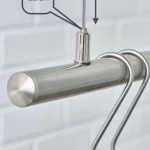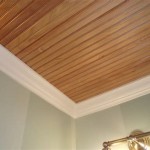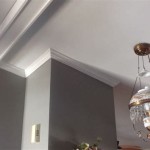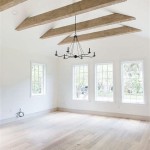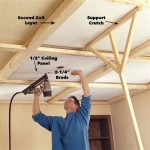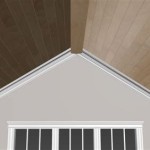How Does A Drop Ceiling Work?
A drop ceiling, also known as a suspended ceiling, is a type of ceiling that is hung below the structural ceiling of a room. It consists of a grid of metal or plastic supports that are suspended from the ceiling by wires or rods. The grid supports a variety of panels, which can be made from a variety of materials, including metal, plastic, or fiberboard. Drop ceilings are often used in commercial buildings, such as offices, schools, and hospitals, because they are easy to install and maintain. They can also be used to improve the acoustics of a room and to hide unsightly wires and pipes.
Components of a Drop Ceiling
A drop ceiling consists of the following components:
- Grid: The grid is a network of metal or plastic supports that are suspended from the ceiling by wires or rods. The grid supports the panels and provides a framework for them to be installed.
- Panels: The panels are the individual units that make up the ceiling. They can be made from a variety of materials, including metal, plastic, or fiberboard. Panels are typically square or rectangular, but they can also be found in other shapes.
- Moldings: Moldings are used to trim the edges of the ceiling and to hide the gaps between the panels. Moldings can be made from the same material as the panels or they can be made from a different material, such as wood or metal.
How a Drop Ceiling Works
A drop ceiling is installed by first attaching the grid to the ceiling. The grid is then suspended from the ceiling by wires or rods. The panels are then installed by dropping them into the grid. The panels are held in place by gravity and by the weight of the moldings. Drop ceilings are easy to install and can be installed by a single person.
Advantages of Drop Ceilings
Drop ceilings offer a number of advantages over traditional ceilings, including:
- Easy to install: Drop ceilings are easy to install and can be installed by a single person.
- Easy to maintain: Drop ceilings are easy to maintain and can be cleaned with a damp cloth.
- Acoustical benefits: Drop ceilings can help to improve the acoustics of a room by absorbing sound.
- Concealment: Drop ceilings can be used to hide unsightly wires and pipes.
- Variety of materials: Drop ceilings are available in a variety of materials, including metal, plastic, and fiberboard.
Disadvantages of Drop Ceilings
Drop ceilings also have some disadvantages, including:
- Reduced ceiling height: Drop ceilings reduce the ceiling height of a room.
- Cost: Drop ceilings can be more expensive than traditional ceilings.
- Maintenance: Drop ceilings require regular cleaning and maintenance.
How To Install A Drop Ceiling 14 Steps With Pictures Wikihow
How To Install A Drop Ceiling 14 Steps With Pictures Wikihow
How To Install A Drop Ceiling 14 Steps With Pictures Wikihow
Installing Woodhaven Planks And Hiding Drop Ceiling Grid Sawdust Girl
A Drop Ceiling That Looks Better Than Drywall How To Install In Basement Diy
How To Install A Suspended Ceiling Vulcan Wire
Ducts In Dropped Ceilings Building America Solution Center
Dropped Ceiling Soffit Below Unconditioned Attic Building America Solution Center
Method Statement For Suspended Ceiling Installation
Some Basement Ceiling Work An Alternative To Traditional Drop
Related Posts

